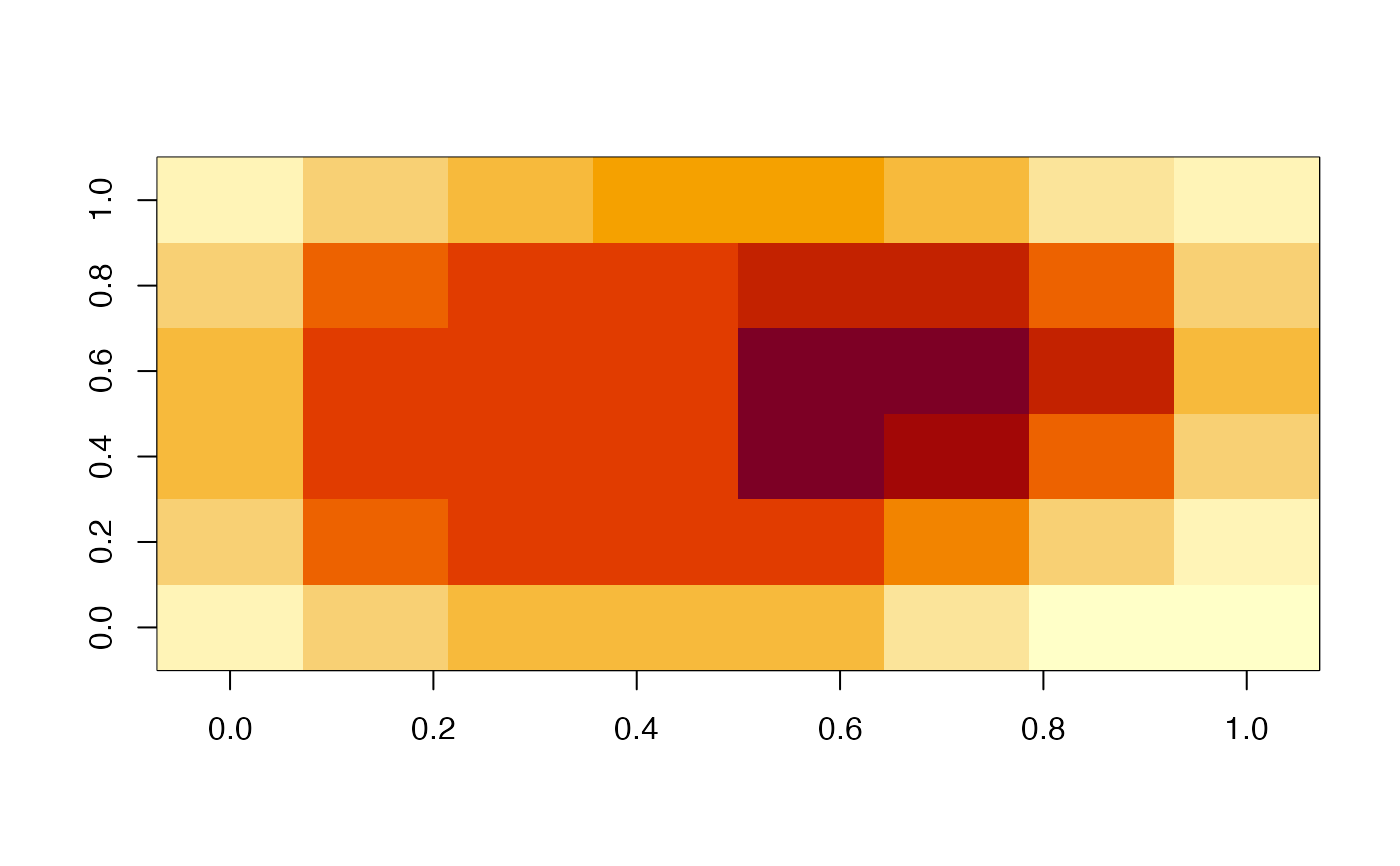This function takes a numeric array of any dimension as input and returns a blurred array of the same dimensions as output.
Arguments
- x
a numerical 'array' (including 'matrix')
- xmin
the smallest possible value in
x; defaults to 0- xmax
the largest possible value in
x; defaults to the smallest integer \(2^k - 1 \leq \code{max(x)}\)- sigma
the standard deviation of the gaussian distribution with which to convolve
x; defaults to \(\code{max(dim(x))} / 2^{D+1}\), where \(D\) is the dimensionality ofx
Details
This function is adapted from spatstat.explore::blur(), part of
the spatstat package collection.
The procedure takes the following steps:
Rescale the value range from \([\code{xmin},\code{xmax}]\) to \([0,1]\).
Convolve
xwith \(N(0,\code{sigma}^2)\).Rescale the result back to the original value range.

